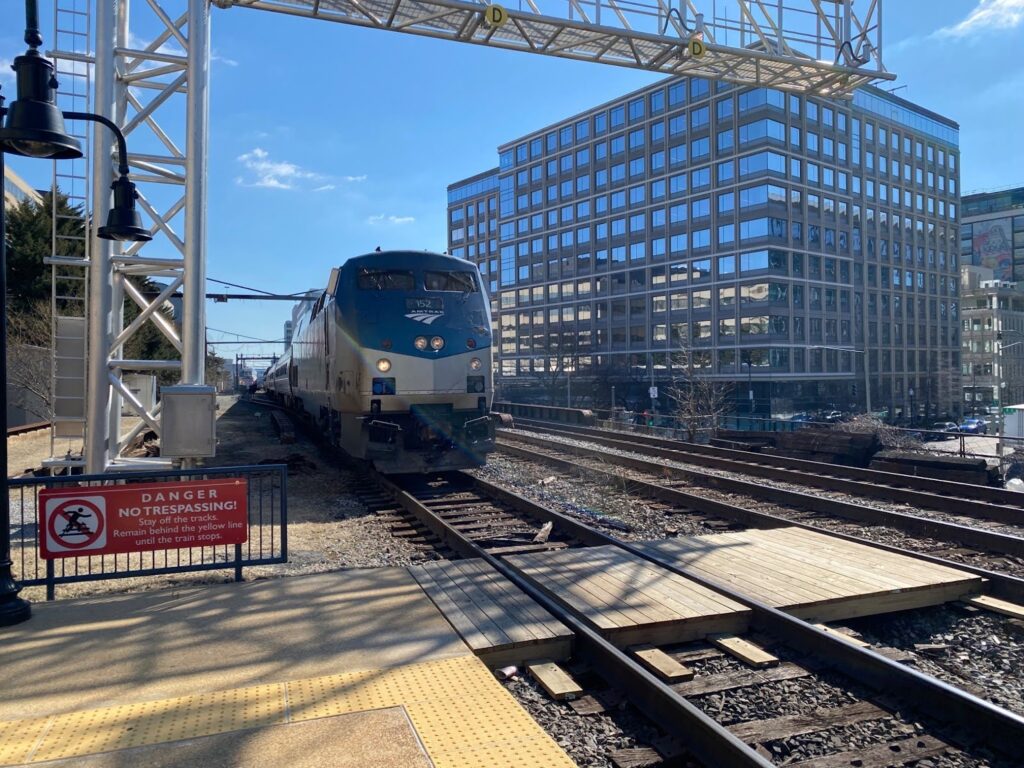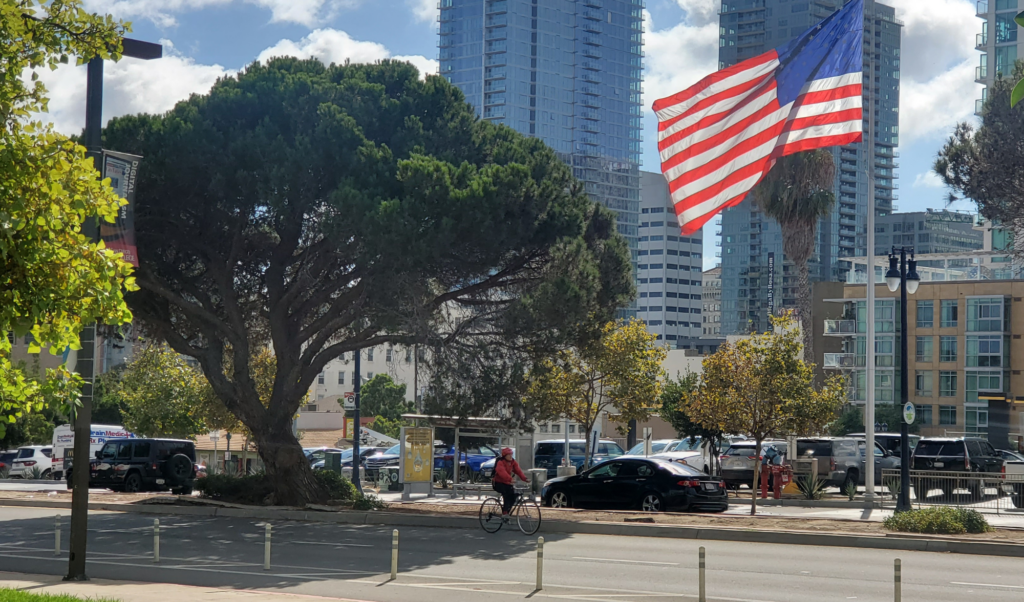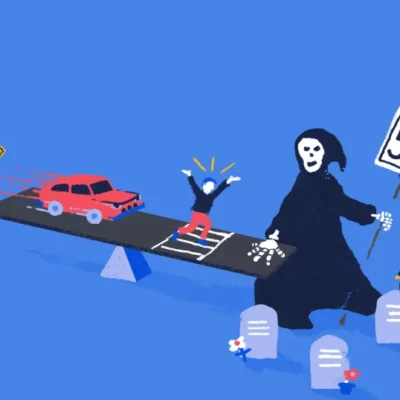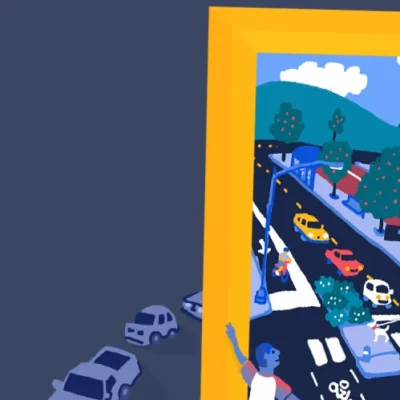
Week Without Driving showcases the need to invest in the rest

Last week, Transportation for America joined organizations and advocates nationwide in the Week Without Driving challenge. During this week, all Americans, including transportation practitioners and policymakers, are encouraged to travel without a car, allowing them to experience local barriers to walking, biking, and taking public transit firsthand.

For decades, our policies and investments have prioritized creating transportation infrastructure that is primarily oriented around the movement of people in cars. This focus has come at the expense of all other ways to travel, and everyday people pay the price.
This is why many advocates and organizations, including Transportation for America, chose to participate in the national Week Without Driving, which challenges people to spend a full week getting around to work, the grocery store, and all other activities, without using a car.
For individuals in transit-friendly and walkable neighborhoods, the Week Without Driving challenge was hardly a challenge at all. Many went about their daily routines or had fun exploring the other travel options in their area. But for the majority of Americans, who live in neighborhoods designed for cars at the expense of the safety and mobility options of everyone else, it’s not as easy as putting down the car keys and choosing another way to get around. Not being able to drive has consequences for travel time, as well as the comfort and safety of a trip. And this is not an accident—it’s a product of years of funding and policy decisions that focused on vehicle speed, rather than the far more important measure of how well our system is getting people where they need to go.
For a third of Americans, traveling without a car isn’t a choice, it’s an everyday reality. Yet many people who regularly drive are unaware of the need for more options. For some, it is an insurmountable challenge to get from Point A to Point B without a vehicle. Hostile walking and biking infrastructure, and unreliable transit frequency and coverage are only a few of the barriers cited by participants in going car free. Poorly maintained conditions of sidewalks and incomplete networks of paths also prevent pedestrians from safely crossing busy roadways and major arterial roads.
The impact isn’t felt equally
Every traveler has had the experience of not being able to drive at some point, for a variety of reasons (including when your car has to be taken in for repairs). However, the burden is felt most by people who are unable to drive regularly, if at all, including young adults, elderly folks aging in place, people with disabilities, and those who cannot afford the exorbitant costs of having a car. Barriers to access for a car are also particularly exacerbated in rural areas and low-income communities.
Everyday travel would look vastly different if the amount of funding we dedicate to expanding roadways and highways was instead used to build out the other transportation options that have been neglected for far too long. Not only would this increase the mobility options available for communities, it would also generate environmental, health, and public safety benefits writ large. We hope this year’s Week Without Driving helped decision-makers envision the transportation network Americans need.
At T4A, we believe it’s time to invest in a complete and comprehensive transportation network that empowers people to get wherever they need to go conveniently and efficiently, regardless of the mode of transportation they choose. That’s why one of our three guiding principles for the next federal investment in transportation infrastructure is Invest in the Rest. Learn more about this principle and why it matters here.
It’s Invest in the Rest Week
Click below to access more content related to our third principle for infrastructure investment, Invest in the Rest. Find all three of our principles here.
-
Four ways our federal leaders can invest in the rest
While we might have the most extensive highway infrastructure in the world, our system is delivering pitifully poor results compared to our peers when it comes to cost, efficiency, emissions, and safety. What can Congress and USDOT do to invest in the rest?
-
Week Without Driving showcases the need to invest in the rest
Last week, Transportation for America joined organizations and advocates nationwide in the Week Without Driving challenge. During this week, all Americans, including transportation practitioners and policymakers, are encouraged to travel without a car, allowing them to experience local barriers to walking, biking, and taking public transit firsthand.
-
Time to tip the scales in favor of more transportation options
For decades, federal highway funding and funding for all other types of transportation (public transit, opportunities to walk and bike) have been severely unbalanced. In order to reduce greenhouse gas emissions, pedestrian deaths, and traffic, the Department of Transportation must invest in more transportation alternatives.



